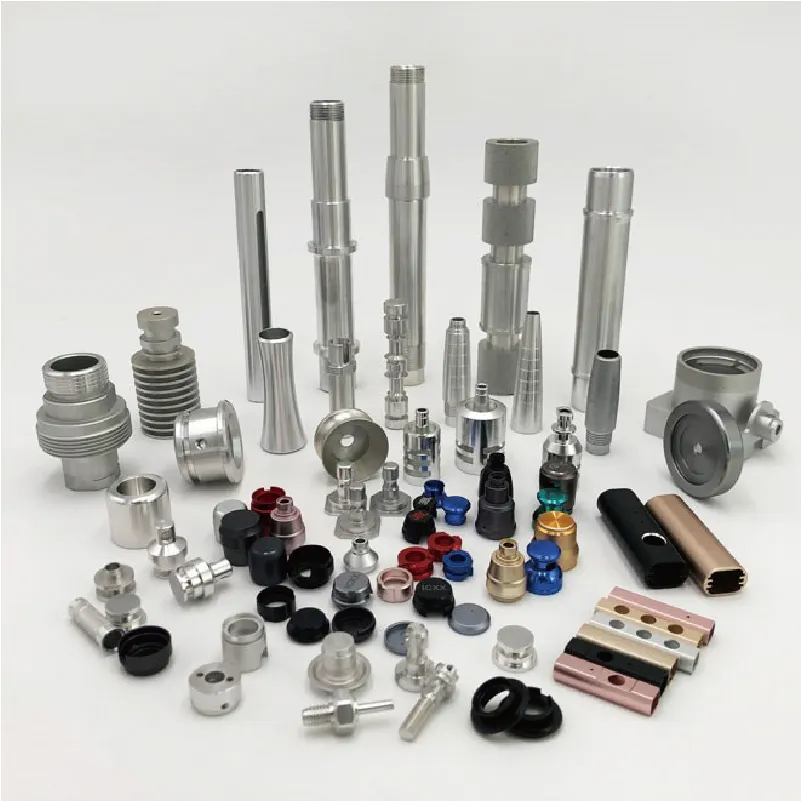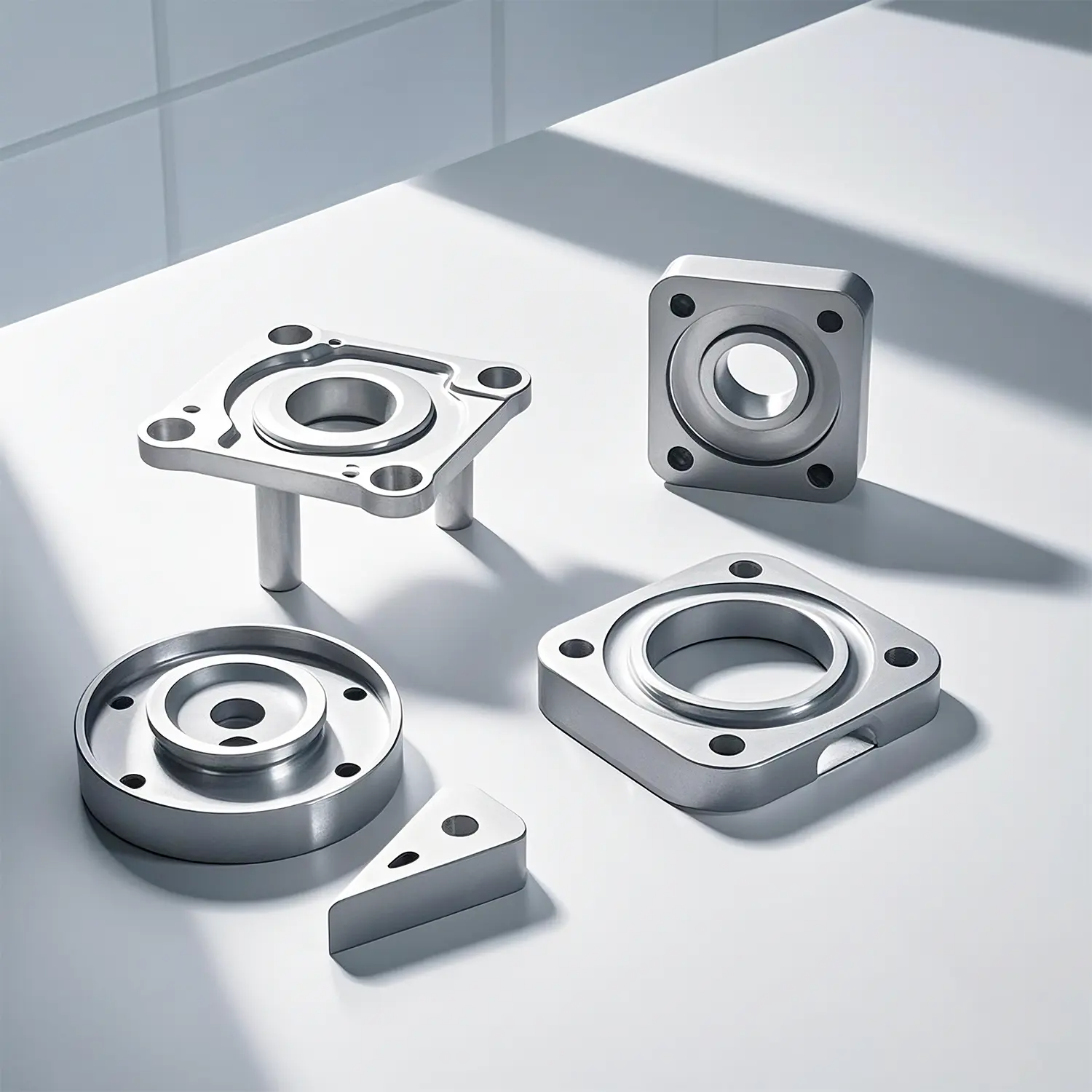How to Improve the Galvanizing Quality of CNC Machined Parts
Modern industries rely on CNC Machined Parts for precision, durability, and consistency across a wide range of applications. These components, produced with advanced CNC machining technologies, are critical in sectors such as automotive, aerospace, construction, medical equipment, and energy. While machining ensures accurate geometries and tight tolerances, additional finishing processes are often required to enhance the durability and performance of these parts. One of the most widely used finishing techniques is galvanizing, which applies a protective zinc coating to improve resistance against corrosion and wear. However, to ensure maximum benefits, the galvanizing quality itself must be optimized. This involves attention to part design, preparation, process control, and post-treatment measures.
Improving the galvanizing quality of CNC Machined Parts is not only about extending their service life but also about maintaining dimensional accuracy, enhancing appearance, and ensuring suitability for demanding environments. Understanding the galvanizing process, its challenges, and best practices allows manufacturers to achieve superior results that meet or exceed industry standards.
The Importance of Galvanizing CNC Machined Parts
CNC Machined Parts are often made from steel, iron, or other metals that are prone to corrosion when exposed to moisture, chemicals, or outdoor conditions. Without proper protection, rust can quickly compromise the strength and reliability of the part, leading to failures in critical systems. Galvanizing provides a sacrificial zinc coating that corrodes in place of the underlying metal, ensuring the base material remains intact.
Beyond corrosion resistance, galvanizing also enhances the mechanical protection of parts, making them more resilient against abrasion and minor impacts. In industries where CNC Machined Parts are used outdoors or in harsh industrial environments, galvanizing is often the preferred finishing solution because of its cost-effectiveness and long service life.
Challenges in Achieving High-Quality Galvanizing
Despite its advantages, galvanizing is not without challenges. For CNC Machined Parts, several factors can compromise coating quality if not properly managed.
One challenge is achieving uniform coating thickness. Complex geometries, sharp corners, or blind holes may result in uneven zinc deposition, leaving some areas vulnerable to corrosion. Another challenge is surface preparation. If parts are not thoroughly cleaned of oils, residues, or oxides, the zinc will not bond properly, leading to poor adhesion and premature coating failure.
Dimensional accuracy is another concern. Hot-dip galvanizing, for example, adds a relatively thick coating that may alter tolerances in precision CNC Machined Parts. This requires careful planning and sometimes adjustments in machining dimensions to accommodate the coating. Additionally, certain steels may react differently to galvanizing due to variations in composition, which can affect coating quality and appearance.
Best Practices to Improve Galvanizing Quality
Proper Design Considerations
Improving galvanizing quality begins at the design stage of CNC Machined Parts. Engineers must consider how the part’s geometry will interact with the galvanizing process. Designs should allow for proper drainage of molten zinc in hot-dip galvanizing to avoid entrapment, which can create weak points or surface defects. Rounded edges are preferred over sharp corners to ensure even coating.
Threaded parts or assemblies must also be designed with galvanizing in mind. Since coating thickness can affect thread fit, allowances should be made to avoid interference. For critical precision applications, it may be advisable to mask certain areas or use alternative galvanizing techniques such as electro-galvanizing, which provides thinner and more controlled coatings.
Thorough Surface Preparation
Surface preparation is one of the most critical steps in improving galvanizing quality. CNC Machined Parts often retain cutting fluids, oils, or residues from the machining process, which must be removed before galvanizing. Standard preparation includes degreasing, pickling in acid to remove oxides, and fluxing to improve zinc adhesion.
Any impurities left on the surface can lead to poor bonding, uneven coatings, or defects such as peeling. Therefore, ensuring that parts are properly cleaned and free from contaminants is essential for achieving consistent, high-quality galvanizing.
Selecting the Right Galvanizing Method
Different galvanizing methods provide different benefits, and selecting the right one for CNC Machined Parts can significantly improve results. Hot-dip galvanizing produces thick, durable coatings but may affect tolerances. Electro-galvanizing offers smoother finishes and thinner coatings, making it suitable for parts with tight dimensional requirements. Mechanical galvanizing and thermal spray methods provide alternatives for parts that cannot withstand high temperatures or require specific surface characteristics.
By carefully matching the galvanizing method to the application and geometry of the parts, manufacturers can optimize both performance and cost-effectiveness.

Process Control and Monitoring
Consistency in galvanizing quality requires strict process control. Parameters such as bath temperature, immersion time, and zinc composition must be closely monitored. Deviations can result in coatings that are too thin, too thick, or uneven. Modern galvanizing facilities often use automated systems to ensure precision and repeatability.
Inspection after galvanizing is equally important. Coating thickness should be measured using tools such as magnetic or ultrasonic gauges, and adhesion tests can confirm that the zinc has bonded properly to the substrate. By incorporating regular inspections into the workflow, defects can be identified early and corrected before parts reach end users.
Post-Treatment Enhancements
Post-treatment can further improve the performance of galvanized CNC Machined Parts. Chromate passivation, for example, adds an additional protective layer that enhances corrosion resistance and improves appearance. Painting or powder coating over galvanized surfaces provides a dual-layer system known as duplex coating, which combines the benefits of both galvanizing and paint for maximum durability.
For parts where aesthetics matter, finishing processes such as smoothing, polishing, or applying uniform coatings help achieve a more visually appealing surface while maintaining protection.
Applications of High-Quality Galvanized CNC Machined Parts
When galvanizing is done properly, CNC Machined Parts can perform reliably in demanding environments. In construction, galvanized structural components, fasteners, and brackets withstand outdoor exposure for decades without rusting. In the automotive industry, galvanized parts are used in chassis, panels, and fittings that require both strength and resistance to weather.
The energy sector also relies on galvanized CNC Machined Parts for equipment used in power plants, transmission towers, and renewable energy systems exposed to harsh conditions. In agriculture, galvanized irrigation components and machinery parts resist both moisture and chemical exposure. By improving galvanizing quality, manufacturers ensure that parts meet industry-specific requirements for durability and reliability.
Conclusion
Improving the galvanizing quality of CNC Machined Parts requires a comprehensive approach that begins with thoughtful design, continues through meticulous preparation and process control, and extends into post-treatment enhancements. Each step contributes to creating coatings that are durable, uniform, and capable of protecting parts in challenging environments. By adopting best practices, manufacturers can ensure that galvanized CNC Machined Parts not only resist corrosion but also maintain dimensional accuracy, functionality, and visual appeal. This ultimately enhances product performance, reduces maintenance costs, and extends service life, delivering long-term value across industries.
FAQ
Why is galvanizing important for CNC Machined Parts?
It protects parts from corrosion, extends service life, and provides mechanical durability in harsh environments.
What are the main methods of galvanizing CNC Machined Parts?
Hot-dip galvanizing, electro-galvanizing, mechanical galvanizing, and thermal spray galvanizing are the most common methods.
How can design improve galvanizing quality?
By allowing for drainage, avoiding sharp corners, and accounting for coating thickness in threads or precision areas, design supports even and durable coatings.
What happens if parts are not cleaned before galvanizing?
Contaminants such as oils or oxides prevent proper bonding, leading to poor adhesion and premature coating failure.
Which galvanizing method is best for precision CNC Machined Parts?
Electro-galvanizing is often best for precision parts because it provides thinner, more uniform coatings that maintain tolerances.
Does galvanizing affect part dimensions?
Yes, especially with hot-dip galvanizing, coating thickness can alter tolerances. This must be considered during the design and machining stages.
Can galvanized parts be painted?
Yes, painting or powder coating over galvanized parts creates a duplex system that offers enhanced durability and aesthetics.
How is coating quality measured?
Magnetic or ultrasonic gauges measure coating thickness, while adhesion tests verify bonding. Visual inspections also help detect surface defects.
How long can galvanized CNC Machined Parts last?
Depending on the method and environment, they can last for decades without significant corrosion.
What industries rely most on galvanized CNC Machined Parts?
Construction, automotive, energy, and agriculture are among the industries that depend heavily on galvanized CNC Machined Parts for durability and reliability.
Table of Contents
- How to Improve the Galvanizing Quality of CNC Machined Parts
- The Importance of Galvanizing CNC Machined Parts
- Challenges in Achieving High-Quality Galvanizing
- Best Practices to Improve Galvanizing Quality
- Applications of High-Quality Galvanized CNC Machined Parts
- Conclusion
-
FAQ
- Why is galvanizing important for CNC Machined Parts?
- What are the main methods of galvanizing CNC Machined Parts?
- How can design improve galvanizing quality?
- What happens if parts are not cleaned before galvanizing?
- Which galvanizing method is best for precision CNC Machined Parts?
- Does galvanizing affect part dimensions?
- Can galvanized parts be painted?
- How is coating quality measured?
- How long can galvanized CNC Machined Parts last?
- What industries rely most on galvanized CNC Machined Parts?

